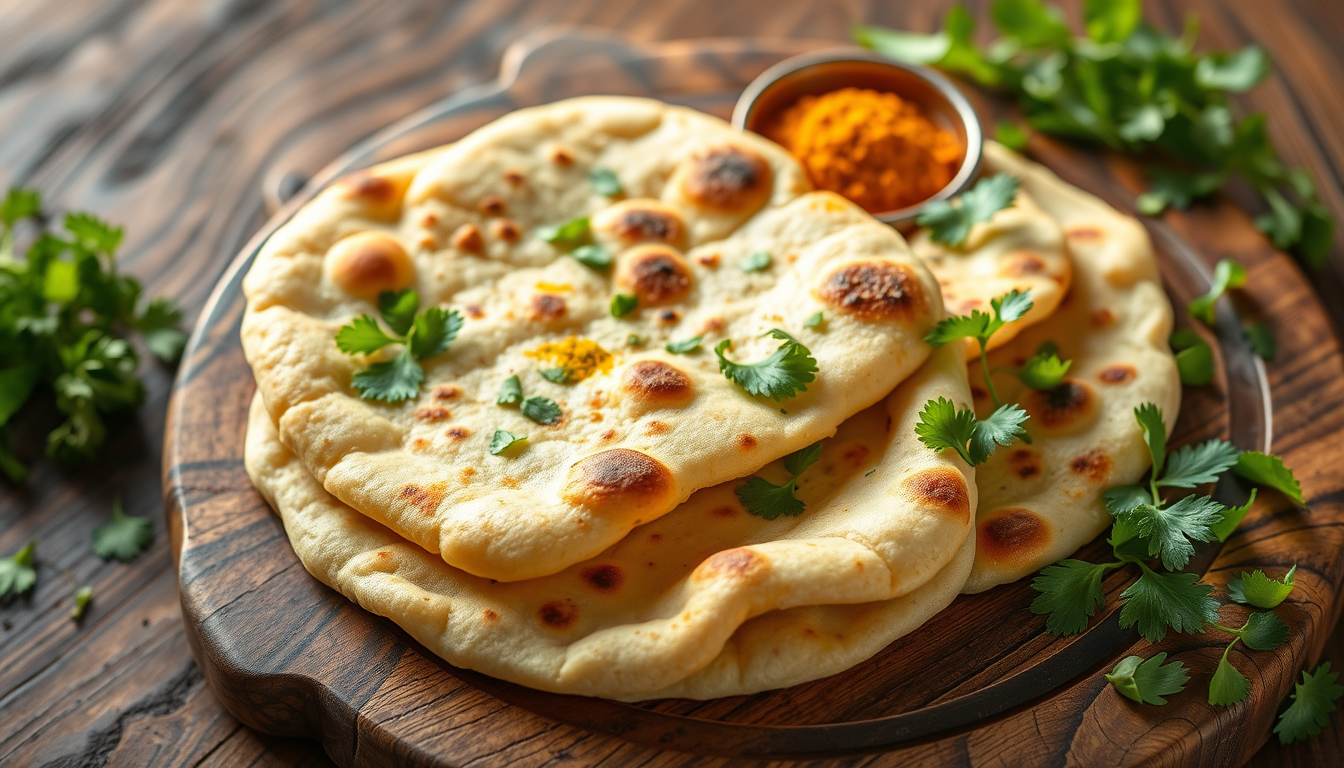Flatbread is a staple in Indian cuisine, with naan being one of the most popular choices. However, there are numerous other Indian flatbreads that offer unique flavors and textures. This article explores some of the most notable alternatives to naan, providing you with a diverse range of options to try.
Introduction to Indian Flatbreads
Indian flatbreads are a fundamental part of the Indian culinary landscape. They are versatile, serving as a side dish, a wrap for various fillings, or a base for curries. While naan is widely recognized and loved, there are many other flatbreads that are equally delicious and offer a different dining experience.
Roti
Definition and Preparation
Roti is a simple and traditional Indian flatbread made from whole wheat flour. It is typically unleavened, although some recipes may include a small amount of yeast for a slightly lighter texture. The dough is rolled out thin and cooked on a tawa, a large, flat griddle.
Varieties of Roti
There are several variations of roti, each with its unique characteristics:
– Plain Roti: The most basic form, often served with curries or as a side dish.
– Laccha Roti: A layered roti, often filled with vegetables or spices.
– Paratha: A thicker, layered roti, often stuffed with potatoes, onions, or other fillings.
Uses and Pairings
Roti is incredibly versatile and can be paired with a wide range of dishes. It is commonly served with curries, lentil dishes, and even as a wrap for sandwiches.
Paratha
Definition and Preparation
Paratha is a layered flatbread, typically stuffed with various fillings. The dough is rolled out thin, filled with the chosen ingredients, and then folded and sealed before being cooked on a tawa. Paratha is often flaky and crispy, with a rich, buttery flavor.
Popular Fillings
Some of the most popular fillings for paratha include:
– Aloo Paratha: Stuffed with spiced potatoes.
– Gobi Paratha: Stuffed with cauliflower and spices.
– Matar Paratha: Stuffed with peas and spices.
– Paneer Paratha: Stuffed with paneer cheese.
Uses and Pairings
Paratha is a hearty and satisfying dish, often served for breakfast or as a main course. It pairs well with chutneys, curries, and even as a snack with tea.
Puri
Definition and Preparation
Puri is a deep-fried, puffed flatbread made from unleavened dough. The dough is rolled out thin, cut into circles, and then deep-fried until puffed and golden brown. Puri is often served with various curries and chutneys.
Varieties of Puri
There are several variations of puri, each with its unique characteristics:
– Plain Puri: The most basic form, often served with curries or as a side dish.
– Aloo Puri: Served with a spiced potato filling.
– Puri Bhaji: Served with a spicy vegetable or lentil filling.
Uses and Pairings
Puri is a popular breakfast item in many parts of India. It is often served with chutneys, curries, and even as a snack with tea.
Bhature
Definition and Preparation
Bhature is a deep-fried, leavened flatbread made from a dough that includes yogurt or buttermilk. The dough is rolled out thin, cut into circles, and then deep-fried until puffed and golden brown. Bhature is often served with chole (chickpea curry) or other curries.
Varieties of Bhature
There are several variations of bhature, each with its unique characteristics:
– Plain Bhature: The most basic form, often served with chole or other curries.
– Aloo Bhature: Served with a spiced potato filling.
– Bhature Puri: A type of bhature that is slightly thicker and often served with chutneys.
Uses and Pairings
Bhature is a popular breakfast item in the Punjab region of India. It is often served with chutneys, curries, and even as a snack with tea.
Tandoori Roti
Definition and Preparation
Tandoori roti is a flatbread cooked in a tandoor oven. The dough is rolled out thin and cooked on the walls of the tandoor, giving it a unique smoky flavor. Tandoori roti is often served with various curries and chutneys.
Varieties of Tandoori Roti
There are several variations of tandoori roti, each with its unique characteristics:
– Plain Tandoori Roti: The most basic form, often served with curries or as a side dish.
– Tandoori Roti with Herbs: Stuffed with herbs and spices.
– Tandoori Roti with Cheese: Stuffed with cheese.
Uses and Pairings
Tandoori roti is a popular side dish in many Indian restaurants. It pairs well with curries, chutneys, and even as a wrap for sandwiches.
Lachha Paratha
Definition and Preparation
Lachha paratha is a layered flatbread, similar to paratha but with a more intricate folding technique. The dough is rolled out thin, filled with the chosen ingredients, and then folded and sealed before being cooked on a tawa. Lachha paratha is often flaky and crispy, with a rich, buttery flavor.
Popular Fillings
Some of the most popular fillings for lachha paratha include:
– Aloo Lachha Paratha: Stuffed with spiced potatoes.
– Gobi Lachha Paratha: Stuffed with cauliflower and spices.
– Matar Lachha Paratha: Stuffed with peas and spices.
– Paneer Lachha Paratha: Stuffed with paneer cheese.
Uses and Pairings
Lachha paratha is a hearty and satisfying dish, often served for breakfast or as a main course. It pairs well with chutneys, curries, and even as a snack with tea.
Conclusion
Indian flatbreads offer a wide range of flavors and textures, providing a diverse dining experience. While naan is a popular choice, there are many other flatbreads that are equally delicious and offer a different culinary experience. Whether you prefer a simple roti, a hearty paratha, or a crispy puri, there is an Indian flatbread to suit every taste and occasion. Explore these alternatives and discover the rich world of Indian flatbreads.
